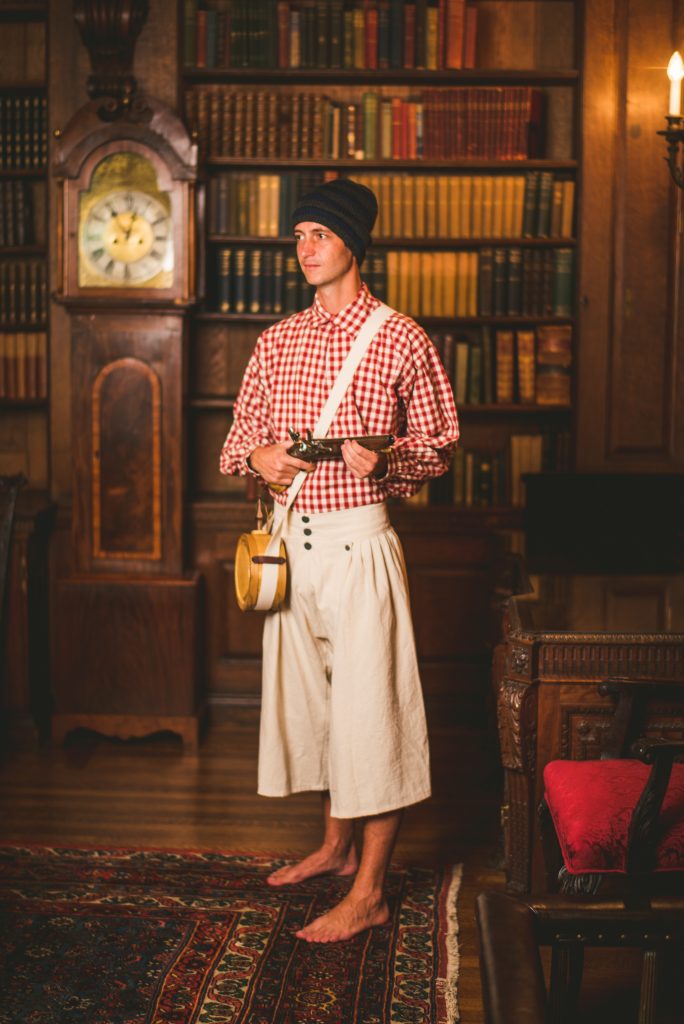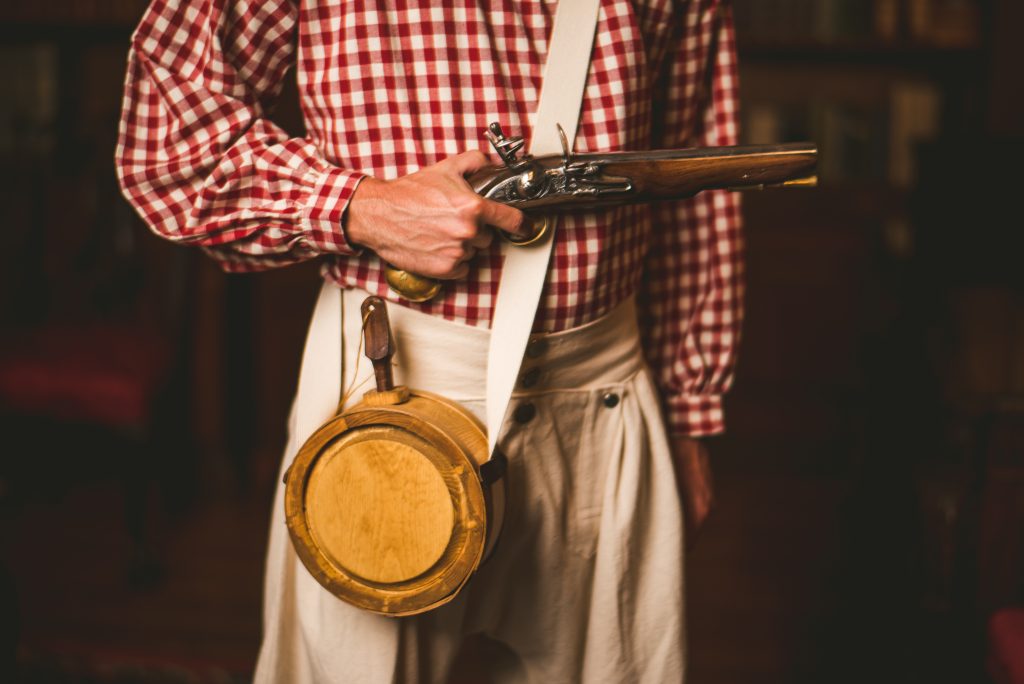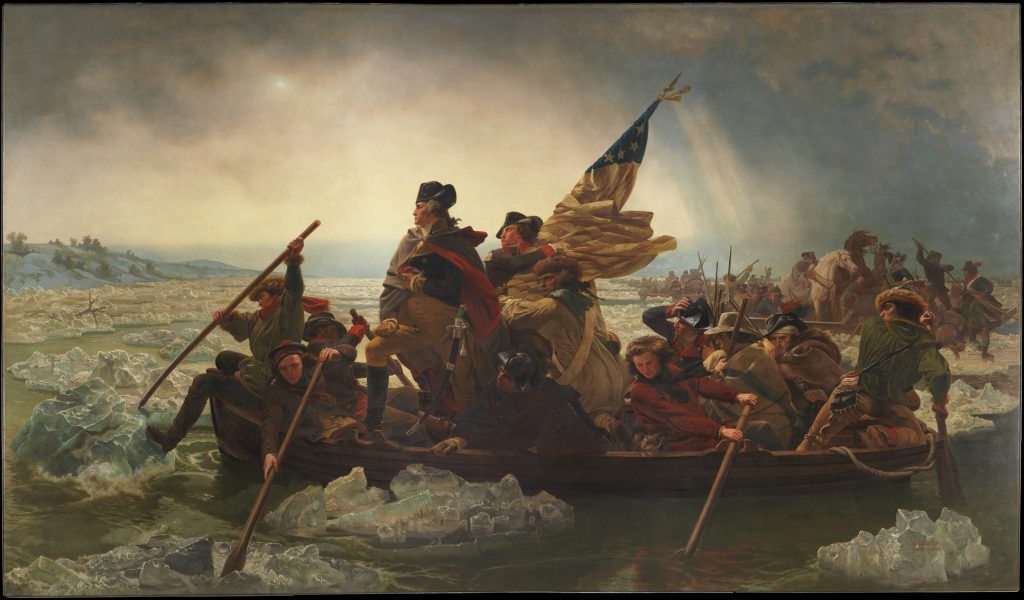Soldiers from the Shore
The Marblehead Regiment formed in January 1775 in the dramatic months before the outbreak of hostilities at Lexington and Concord. The regiment was raised in Marblehead, Massachusetts and recruited additional men from fishing towns on the north shore of Massachusetts including Beverly, Salem and Lynn. It was commanded by Colonel John Glover.
The Marblehead Regiment reflected the ethnic composition of New England maritime towns. American Indians and Africans sailed on Yankee ships and settled in seaport villages. They also enlisted in Glover’s regiment. Glover knew these men as shipmates and welcomed them to his command. Others in the army did not approve. Alexander Graydon, an officer from Pennsylvania, recorded the presence of African Americans among Glover’s troops which “to persons unaccustomed to such associations, had a disagreeable, degrading effect.” These cultural differences throughout the Continental Army challenged General Washington’s efforts to achieve uniform discipline and order.
Glover’s Regiment Saves the Day
Many of Glover’s men were sailors. Sailors made good soldiers. They were accustomed to harsh working conditions with poor rations. They took orders and worked with others to accomplish tasks. George Washington called upon the Marbleheaders during the retreat from Long Island. After British general William Howe outflanked the American forces at the Battle of Brooklyn Heights, the poorly trained and inexperienced Patriot infantry scattered in panic and suffered high casualties. Washington dispatched the men of Glover’s Regiment to ferry 9,000 Continental troops across the East River to Manhattan, thereby avoiding being surrounded and destroyed by overwhelming British forces. The Marblehead Regiment also played a crucial role in the crossing of the Delaware River on Christmas night, 1776.
Reproduction Clothing and Equipment
The Continental Army Trunk includes clothing representing a sailor who came to the army through the Marblehead Regiment. He wears sailor’s pants known as petticoat trousers. He wears a checked shirt commonly seen among working men and a knit cap. He carries a haversack and canteen . His feet would often be bare while working on a ship.
Additional Lesson Plans and Links
The Fight for Independence: A View from the Front Lines – The American Revolution Institute
Captured British Light Dragoon Carbine – The American Revolution Institute
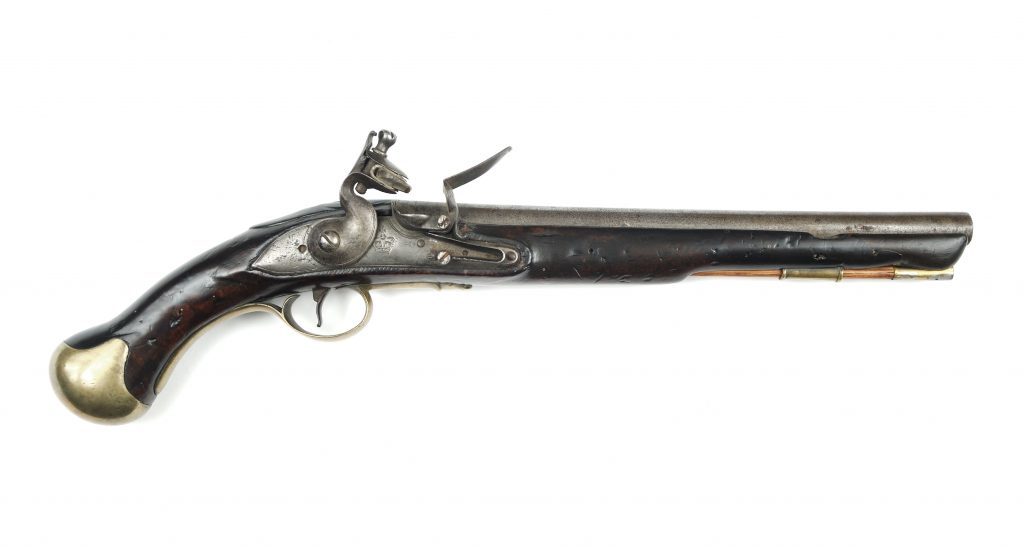
British sea service pistol
Farmer
1759The Society of the Cincinnati, Gift of John Sanderson du Mont, New York State Society of the Cincinnati, 1994
British sea service pistol, 18th century. Smoothbore, round, .60-caliber barrel. Walnut stock. Convex lock is from an earlier British heavy dragoon pistol and bears the George III cipher stamped forward of the hammer and the ordnance "Crown/Broad Arrow" mark stamped beneath the frizzen pan. The tail of the lock is engraved "Farmer / 1759" in a rectangular cartouche (indistinctly, as a result of pitting). Double-leg flattened brass sideplate is from a British Pattern 1769 short-land pattern musket. Standard brass sea-service mounts. The ramrod is a replacement.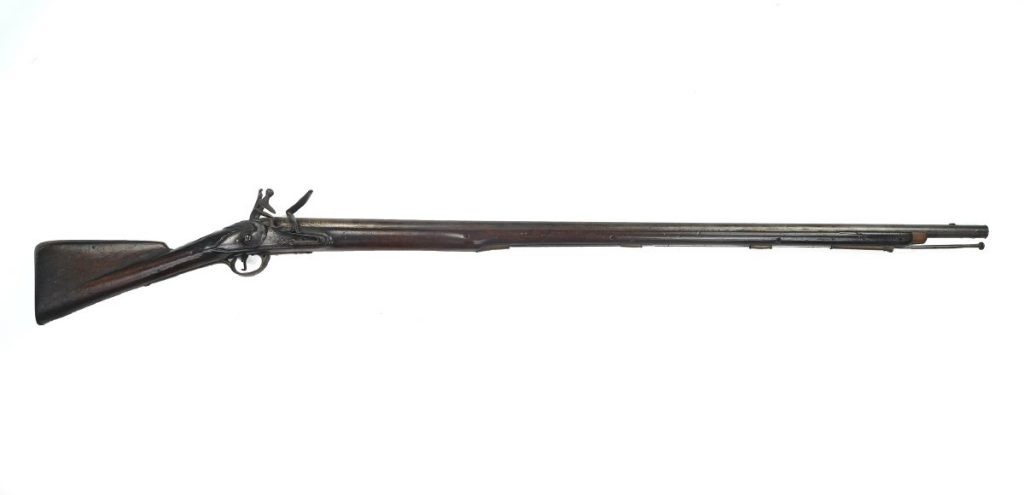
British Pattern 1756 long land "Brown Bess" musket
Tower Armory
ca. 1756The Society of the Cincinnati, Gift of Henry Hotchkiss, Society of the Cincinnati in the State of Connecticut, 1979
British Pattern 1756 type I long land pattern "Brown Bess" flintlock musket used during the Revolutionary War by the Seventh Regiment of Foot and captured during the British raid on New Haven, Connecticut, by Jonah Hotchkiss. Round, smoothbore, .75-caliber barrel with ordnance proofs stamped at the center breech and marked near the breech plug in old, deeply engraved letters, "7 REGt." Lockplate is stamped "Tower" towards the rear and with the King George III cipher towards the front. Lock has a single screw behind the cock. The brass wrist escutcheon is also engraved "F/37" indicating the gun was the 37th one issued to Company F. The stock bears a very deep, nicely struck storekeeper's mark at the right butt. With the original ramrod.